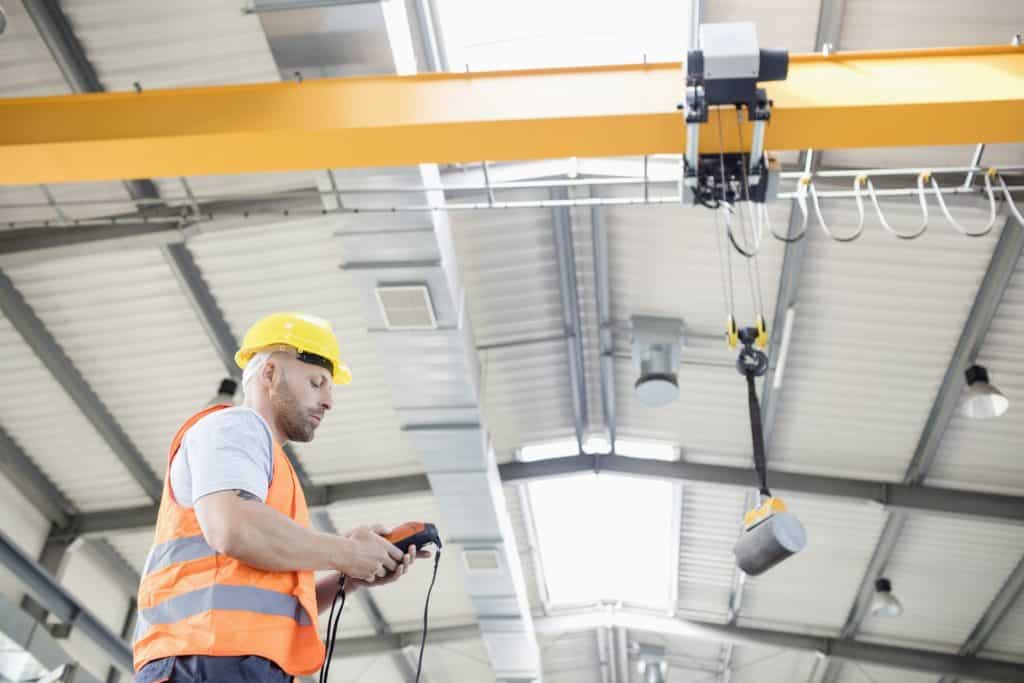Safety is important in any industry, but in crane operation, safety is paramount. Cranes have the power to lift loads that weigh thousands of pounds. Any mistakes in operating them can cause serious injury and even death.
As a crane operator, safety should be your priority. Following safety tips protects your equipment, your coworkers, and everyone around your work site. Here’s what you need to do before operating a crane.
1. Receive Proper Training
The importance of crane operator training cannot be overstated. Before you can work as a crane operator, you need to undergo training endorsed by the National Commission for the Certification of Crane Operators (NCCCO).
At a training course, you’ll learn how to operate a crane safely and how to avoid and address any dangerous situations. You’ll need to prove that you can safely operate a crane before you can earn a Certified Crane Operator license.
2. Choose the Right Crane for the Job
Once you obtain your license, you can now perform a specific crane operating job. Remember that each crane has certain requirements about how much weight it can lift. Overloading a crane can cause it to break or drop the load. That’s why it’s crucial to make sure you choose the correct crane for your load and that you follow the crane’s loading requirements.
3. Examine Your Crane
Once you’ve selected the correct crane, you need to make sure the crane is in good shape before you complete a job. Someone trained in crane inspections should examine the crane before every work shift.
They should check for:
- Structural and mechanical integrity of the crane and its rigging
- Adequate gas, oil, and fluid levels
- Correct pads and cribbing to support the crane during the job
Remember that new issues can arise at any time, so look over your crane before each new job. Before lifting a load, verify that the hoist, hooks, and other components meet the operating requirements.
It’s especially important to make sure that the crane’s chain is in top condition. You should not lift a load with a chain that’s frayed, twisted, or otherwise damaged. Also, ensure the chain is taut before you lift.
If you notice any issues with your crane, do not use it until the issues are resolved. Delaying a job can be inconvenient, but it’s better than compromising you and others’ safety.
4. Familiarize Yourself with the Crane’s Controls
If you’ve never used this particular crane before (for example, if you’ve rented a crane for the specific job), make sure you find the location of all the crane’s controls.
It’s especially important to know the location of the upper limit switch. This switch can prevent the load block from damaging the hoist. Test it to make sure it functions properly. You also need to locate the power disconnect switch. This cuts power to the crane if you lose control of the crane. Both the upper limit switch and power disconnect switch are crucial to prevent emergencies.
5. Examine the Job Site
Along with examining the crane itself, you also need to examine your job site and the surrounding area. Take note of the weather—rain, wind, and other conditions can impact safety. You may need to adjust how you operate the crane to safely navigate various weather conditions.
Also, check the conditions of your job site. Make sure the ground around the site can support the crane’s weight. Next, check for any surrounding architectural features, such as power lines and buildings. You should mentally map out the job you’re performing so you navigate far away from these features.
Finally, make sure you’re aware of the position of all people around the job site. Workers should wear safety equipment and should stand well away from the crane. They should not stand under the load for any reason.
6. Remove Distractions
Operating a crane is a complex process. Just as you would when driving a car, you should remove any distractions such as cell phones, food, drinks, and cigarettes. Never operate the crane under the influence of alcohol or drugs.
Pay close attention during every crane job. Do not relax your performance just because you’re performing a simple job or because you’re comfortable with crane operation. According to Konecranes Training Institute, most crane accidents occur during routine jobs.
As a crane operator, you wield incredible power. Careful operation is crucial to protecting your safety as well as that of those around you. Follow these steps to safely and effectively operate your crane.
If you need crane operator training, turn to the experienced professionals at American Equipment. We offer crane training and certification classes through the National Commission for the Certification of Crane Operators. We also service and repair many types of cranes, so call us today!


